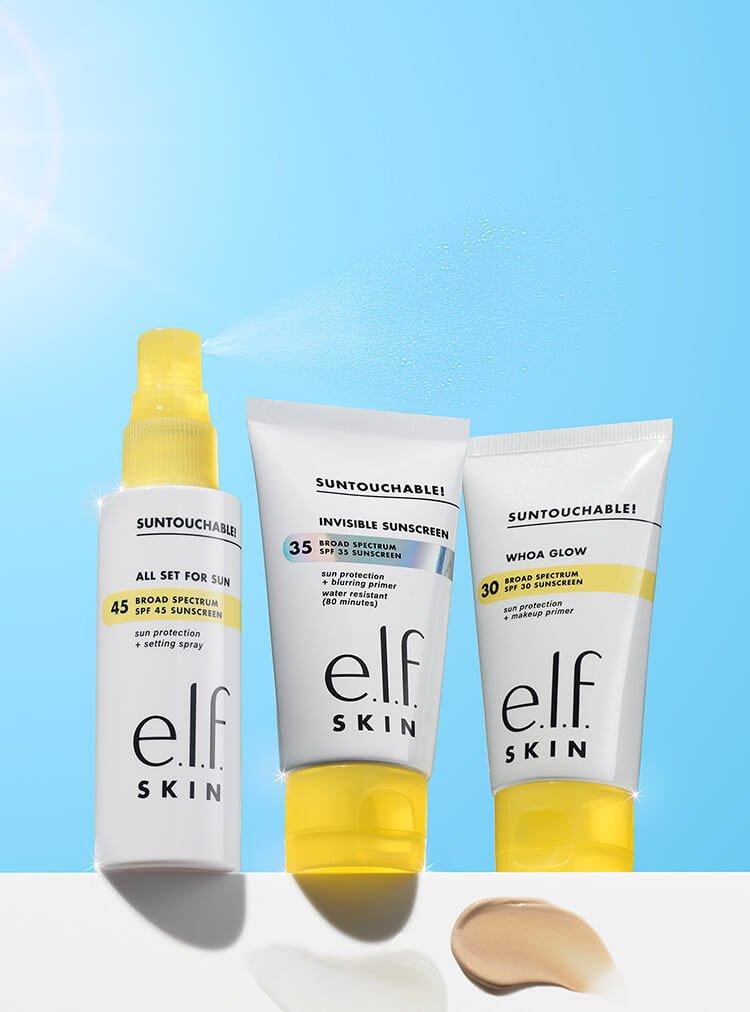
Want to blur skin and grip makeup?
This SPF primer is the *clear* winner.
☀️ Velvety-smooth texture
☀️ Invisible on all skin tones
SUNTOUCHABLE! INVISIBLE
SUNSCREEN SPF 35, $14



Prime, set glow and protect with broad-spectrum SPF—
including a quick-drying spray and invisible, velvety gel.


Want to blur skin and grip makeup?
This SPF primer is the *clear* winner.
☀️ Velvety-smooth texture
☀️ Invisible on all skin tones
SUNTOUCHABLE! INVISIBLE
SUNSCREEN SPF 35, $14
If a glowy finish is the goal
(when is it not?) you need this
illuminating SPF primer.
☀️ Lightweight, hydrating,
non-greasy texture
☀️ Sheer peach shimmer finish
SUNTOUCHABLE! WHOA
GLOW SPF 30, $14

Set your makeup, protect your skin
and spray all e.l.f.ing day.
☀️ Quick-dry setting spray
☀️ Natural finish—can be reapplied
over makeup
SUNTOUCHABLE! ALL SET
FOR SUN SPF 45, $14
Sunscreen is important to help protect your skin from the harmful rays of the sun. When used correctly, it can help decrease your risk of getting skin cancers, as well as help prevent premature skin aging if used as directed with other sun protection measures. This includes wrinkles and skin discolorations caused by exposure to the sun.
There are multiple types of rays that the sun emits. The two that can impact your skin the most are UVA and UVB rays. The easy way to remember the difference between the two is to think of UVA rays as the ones that can contribute to premature skin aging. UVA rays are the ones that can give you more wrinkles and skin
discolorations.
Think of UVB rays as the ones that contribute to the sunburns you can get from too much sun exposure. The UVB rays are the ones that can increase your risk of getting skin cancer. Choosing a sunscreen that is broad-spectrum SPF means that it will help protect your skin against both types of rays—UVA and UVB.
The SPF number on your sunscreen can be very confusing. According to SkinCancer.org, SPF stands for Sun Protection Factor and it describes how long it would take your skin to shows signs of a sunburn while properly using a sunscreen compared to being in the sun without any protection at all.
What this means is that if you are in the sun without any sun protection and it takes 10 minutes for your skin to start getting red, with an SPF 15 you could stay out in the sun 15 times longer before showing redness. An SPF 30 would allow you to stay in the sun 30 times longer. However, it is important to remember that the number of the SPF does NOT refer to how many minutes you can be out in the sun. Regardless of the number on your SPF, the important thing to remember is to use your sunscreen exactly as directed on the package and reapply every two hours to be safe.